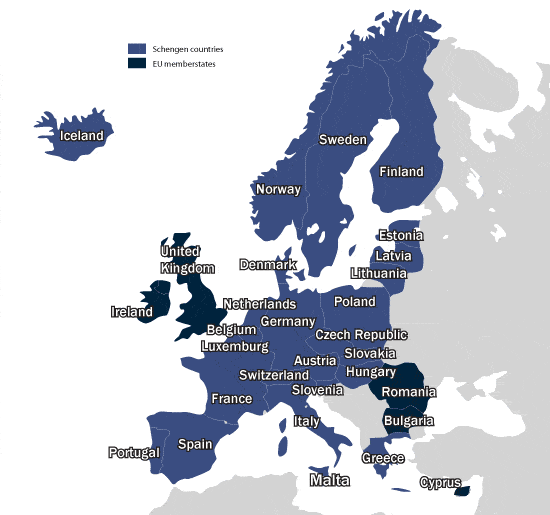Fortunately, traveling to Europe is easy for US passport holders. Most European countries don't require a visa for short-term stays and, as we discussed previously, this saves valuable time and money in planning your travels.
However, if you'd like to visit Europe for more than 90 days, then you need to be aware of a slightly-confusing-yet-very-important immigration zone called the Schengen Area. The Schengen Area is a passport-controlled region that allows visitors to freely travel between its 25 member countries without any internal border checks. Think of it like the United States – you're only subject to border controls upon arrival, not when passing between individual states.
 |
| Map of the Schengen Area. From http://www.axa-schengen.com. |
What to do if you'd like to stay in Europe, but have used up your Schengen time? Head to a non-Schengen country, such as UK, Ireland, Andorra, Croatia, Serbia, Bosnia, Albania, Montengro, Macedonia, Moldova, Cyprus, Turkey, Belarus, or Ukraine. As US passport holder, you can visit most of these countries for 90 days visa-free (that's 90 days per country!) Romania and Bulgaria are currently under consideration for Schengen membership and could join as early as March 2012.
In short, if you're an American tourist who wants to spend more than 90 days in Europe, you'll probably have to keep moving every three months. That might not be a bad itinerary, as you can country hop according to the seasons. Perhaps spring on the beaches of Croatia, summer in the south of France, fall in Britain’s Sherwood Forest, and winter in Spain’s Costa del Sol? Hmmm... I think that I can find a way to work with that!
